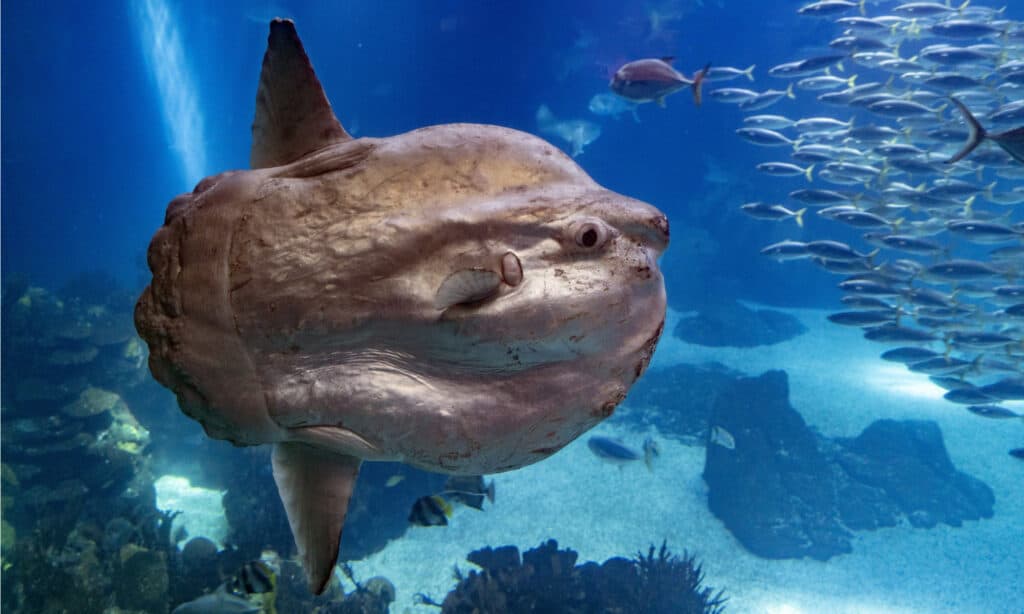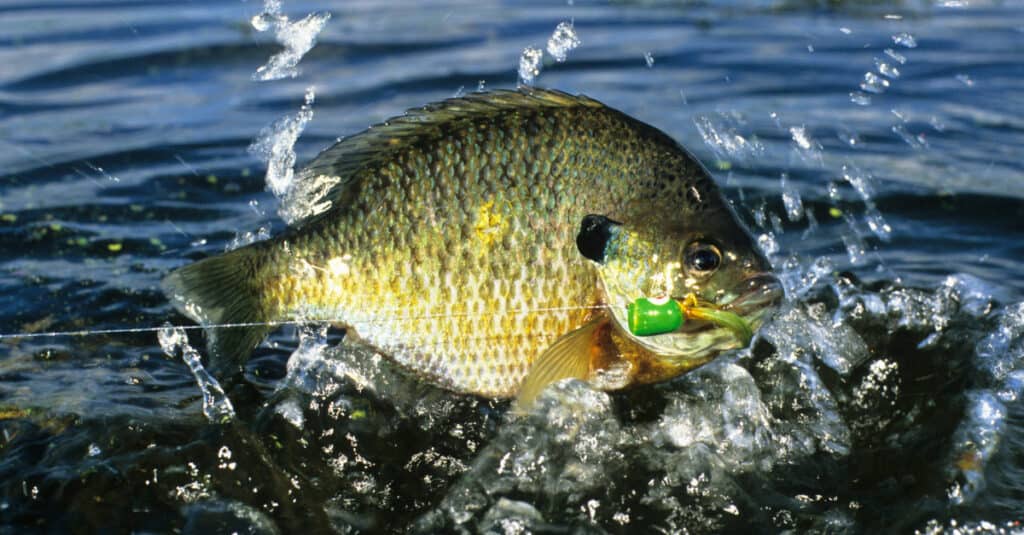The Bluegill vs Ocean Sunfish are two species often mistaken for each other. These fish are two distinct species, despite this common belief. There are some key differences, with habitat, species-specific traits, colors, size, and diet marking some of the most significant differences.
Before we jump in, it is important to note the two distinct species of Sunfish: freshwater and ocean. The Centrarchid family, which include Freshwater Sunfish, is comprised of freshwater fish including popular game fish such as Crappies, Largemouth Bass, and Bluegill. Ocean Sunfish, or Mola Mola, are a part of the order Tetraodontiformes, which are ray-finned fish who descended from coral dwellers. So, in this article, we are actually comparing two types of Sunfish: the Bluegill (freshwater) and the Mola Mola (saltwater).
How significant are these differences, and how do they impact how fishing enthusiasts seek these fish out? How easy is the identification of these fish? If you are catching these fish, what do you use for bait, and how might where they live to impact their taste?
We’ll look at some facts that may answer these questions below.

Mola Mola are perhaps the biggest bony fish in the world.
©Andrea Izzotti/Shutterstock.com
The 5 Key Differences Between Bluegill vs Sunfish
The Bluegill vs Ocean Sunfish, despite their similarities, have some key differences that set them apart. These species’ differences impact their interaction with their environment and other species. Here is a closer look at these differences:
1. Limited or Broad Range
The Bluegill is a freshwater species native to North America. Ocean Sunfish, or Mola Mola, however, are saltwater fish who reside in tropical and temperate areas of the Atlantic and the Pacific Oceans. The Bluegill may inhabit rivers, streams, or ponds as a freshwater species.
2. Bluegills Are Flatter, Sunfish May Mimic Sharks
The Bluegill has a flat, slender body with dorsal and pectoral fins.
The Mola Mola is built like a tank! It has a tiny mouth with large, bulbous eyes. It’s not nearly as thin and flat as the Bluegill. Ocean Sunfish have large, protruding dorsals that often cause people to mistake them for sharks.
3. Different Colors for Different Habitats
These two different Sun Fish boast different types of colors. For example, the Bluegill has a dark blue body, with black spots on the dorsal fins and yellow bellies. On the other hand, Ocean Sunfish have shades that include brown, silver-grey, and white, with the color variation being one of the facts that highlight the differences the most.

The Bluegill has a yellow belly.
©iStock.com/stammphoto
Due to countershading, the Mola Mola is multicolored. Its doral side is darker colored than its ventral area. When viewed from below, the light underside helps the Mola Mola blend in with a bright background. The opposite is true when viewed by a predator from above since the ocean floor and top of the fish are dark. Most fish, whether saltwater or freshwater, are countershaded.
4. Much Different Sizes!
One of the easiest ways to make identification between the two species is the significantly different size. The Bluegill ranges from 7-15 inches long, regardless of whether living in a river or pond setting. Sunfish are a larger species, averaging between 5 feet, 11 inches long to 10 feet long.
The Ocean Sunfish averages a weight of 2,200 pounds! The Bluegill is much lighter, averaging 2.6 pounds. The largest Bluegill ever caught was 4.12 pounds.
5. Two Different Diets
These fish have different diets because of their habitats. One of the essential facts about the dietary habits of these fish is that the Bluegill eats zooplankton, algae, crustaceans, insects, and even their own fish eggs if desperate enough. Mola Mola has a diet that includes fish, fish larvae, squid, and crabs.
Up Next…
Discover the differences between other “similar” fish!
- Oyster vs Clam: 7 Main Differences Explained Which have pearls and shells? Which are saltwater or freshwater?
- Buffalo Fish vs Carp They may look alike, but these two fish are quite different.
- Sawfish vs. Swordfish: 7 Key Differences Between These Fish Both may be able to spar with their noses, but they have many distinctions. Find out more here!
The photo featured at the top of this post is ©
FAQs (Frequently Asked Questions)
What Are Some Different Names for the Sunfish and Bluegill?
Anyone trying to make an identification of either species will want to know what else people sometimes call these fish. Sunfish are sometimes known as sea sunfish or saltfish. Another name for Bluegill is bream.
What Type of Bait Do You Need to Catch Sunfish or Bluegill?
Worms, particularly nightcrawlers, larvae, and crickets, work well as live bait for either species. Thawed bait of any variety will attract these fish, but the motion from live bait attracts more attention. Fly fishing lures make an excellent alternative to natural baits.
Do Sunfish and Bluegill Have a Similar Taste?
Both fish types have a somewhat different taste due to their habitats. Sunfish have a rich taste with similarities to Sea Bass and Lobster, and flavor many sauces and soups in Asian food. Bluegill has a sweeter taste, similar to Tilapia, with firm yet flaky meat.
Thank you for reading! Have some feedback for us? Contact the AZ Animals editorial team.






